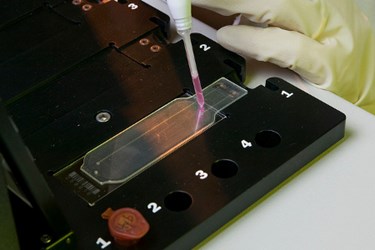Government Researchers Develop Technology To Detect Bacterial Pathogens In Wounds
By Joel Lindsey

Researchers at Lawrence Livermore National Laboratory (LLNL) have developed a technology they say could dramatically improve the range of bacterial pathogens detected in wounds, as well as clinicians’ abilities to accurately identify infected wounds.
“The culture-based methods currently being used to measure infection often do not detect bacteria that are difficult to grow in the lab,” Nicholas Be, a scientist at LLNL, said in a press release. “Better detection methods for microbes that impact the healing process could help surgeons make more informed predictions and decisions for improving patient care.”
The technology, known as the Lawrence Livermore Microbial Detection Array (LLMDA), includes 180,000 probes that are capable of detecting any previously sequenced bacteria or virus within 24 hours.
In a recent study focused on using the LLMDA to detect bacterial pathogens in the wounds of soldiers, scientists used an array that featured probes for around 8,100 microorganisms, of which 3,855 were bacteria and 3,856 were viruses.
The researchers reported finding at least one pathogen in approximately one-third of wound samples that had already been declared pathogen-free by older culture-based detection techniques. Results from the study, which covered a three-year period and examined 124 wound samples from soldiers injured while fighting in Iraq and Afghanistan, have been published in the Journal of Clinical Microbiology.
“Wound microbes are unique to each patient. The use of advanced detection technologies could provide clinicians with valuable information during treatment,” said Be. “In particular, information on the presence of specific bacteria that more significantly impact the success of the healing response could guide therapy and allow for more accurate prediction of outcome.”
While the array used in the study was designed specifically for use in treating and diagnosing soldiers, researchers involved with the project say that the technology could also provide significant benefits for healthcare applications beyond the battlefield.
“Our technology could be helpful to doctors treating burns with large surface areas, people injured by trauma, or people with diabetic ulcers,” said Crystal Jaing, a biologist at LLNL who co-authored the paper with Be.
Image credit: Lawrence Livermore National Laboratory
